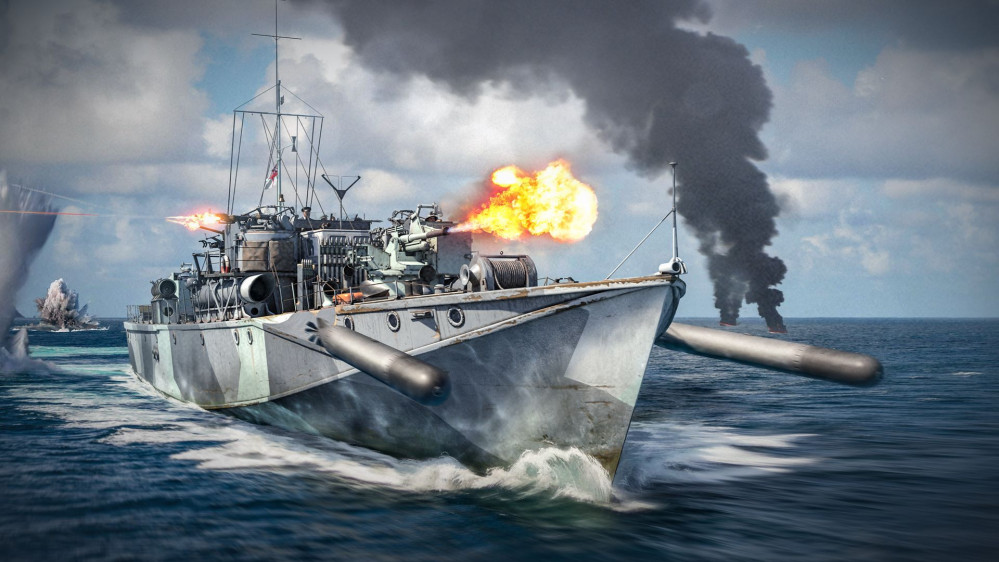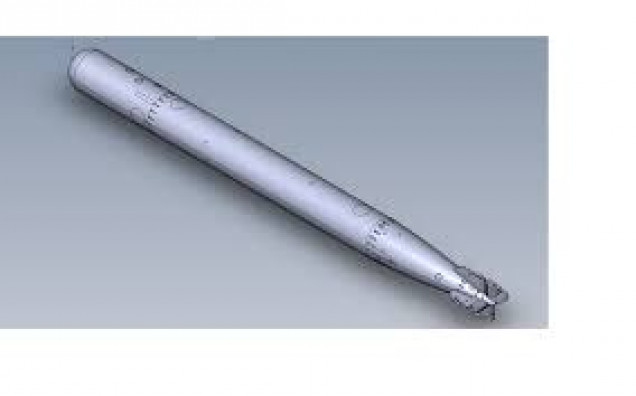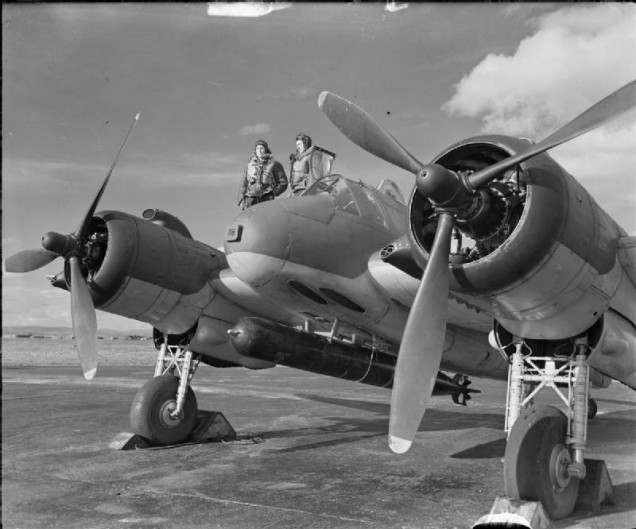
Bob C's Everything you Didnt Want to Know about British Coast Forces and how to play them.
Torpedoes the sticky rule problem
When talking about Coastal warfare and the use of Motor torpedo boats perhaps its a good idea to look at these weapons as they are major feature in most games and can swing games dramatically. As most of the smaller types of gun used by coastal boats were variants of land based wpns we are more familiar with them with their range and effects, but how good are we with torpedes I think nearly all rules under estimate their effect Torpedo’s and their tracking has always been a bit of game problem. Early 1970’s to 1980′ early naval rules ran them as almost a short range super gun, in that once in range they were launched and hit in one move with just a variation of the gun rule modifiers. One torpedo hit historically could be the death nell for most ships. Yet how much do we actually know about them, to help with this little project I did a bit of background research on wiki , which may no be accurate but lets use it as a start . So far I’ve only looked at the British Torpedoes being used and that brought some surprises not mention a couple of re-writes of below
The British used two types of Torpedo on its MTB’s initially:
They used the Mark 8 or 10 21″ torpedo initially the mark 8 had a range of 5000 yds at 40 knots carrying a 75olb TNT warhead , this was developed as war went on to a version capable of multiple settings increasing range to 7000 yds and changing the warhead from TNT to a Torpex load of between 722 to 805lb
Torpex developed way back in late 19th century but initially considered to expensive for military applications is 50% more powerful than TNT by mass explosive power. Its use in Allied Torpedoes in the later part of the war certainly took the Japanese by surprised and had it most dramatic effect in the sinking of the Musashi the Sister to the Super Battleship Yamato, these ship armour belts had been designed to stop torpedoes with tnt and were unable to cope with the more explosive Torpex.
They later began to use the lighter Mk15 version of the 18″ torpedo a later version of those developed for launch from aircraft capable of a speed of 40 knots for ranges up to 2500 yds and 30 knots for up to 3500 yds carrying Torpex warhead weighing 545lb. With the increase in explosive effect this torpedo would be just as effective as the early war 21″
They also developed more reliable detonators for instance over coming the the problem magnetic detonators which caused nearly tragic problems during the Bismark Breakout. These were improved to the point they would detonate when they got into proximity of the target rather than having to hit. In the Mediterranean this solved the problem the allies had when engaging Axis convoys made up of shallow hulled F-lighters and Seibel Ferries as prior to their development torpedoes where considered useless as they ran to deep and would pass under them.
Gaming Problems
So in just looking at British Torpedoes we have to take into account
A) the different Types
With the small boats in Cruel Seas you could argue that the drop in torp size for British boats was made up by the increase in explosive power, but if large ships such as destroyers are added as many player are requesting then the different sizes need to be taken into account
B) Wartime developments just with British torpedoes (and American) they became more effective as the war progressed in their explosive effect
This can be easily coped with plus or minus to the dud roles, plus allowing smaller targets to be hit for later periods of the war.
In addition
C) Tracking of Torps
The early rules ideas of they were just a supergun got round the gaming problem of tracking them but then the problem with this that they don’t actually move much faster that of warships and around 3-4 times faster than the average Merchantman. But they take time to get there and if spotted the target can try and manoeuvre out of the way. In some ways in fleet actions their ability to actually the target to change course can be almost useful as actually hitting them. One only has to look at the Battle of Jutland, when the High Sea Fleet launched a mass wave of Torpedo’s at the British Grand Fleet, as far a I remember only one hit, but their main effect was to force the British to turn away allowing the now badly mauled German fleet to break of the action.
A lot of modern sets use markers (really nice ones for Cruel Seas) which are placed on table and these then these are moved in a straight line forward, and hits are rolled when they actually hit a model. A die roll is still needed as the model scale is usually much greater than ground(sea) scale. Also a torpedo may not travel is a totally straight line due to sea currents ,weather conditions etc . To reflect this in an old WW1 set of rules we had we had a increasing size of torpedo marker for each move it ran getting wider at the end of each move. in the role to hit the base chance to hit reduced each move.
D) The fog of war , in are they spotted or not.
The problem with a visable marker is that the player who’s ship it is can see it coming and will try and manoeuvre out of way. In 1/300th the scale of Cruels Seas make this more difficult but I have read accounts of some interesting ship manoeuvring in the facebook forums.
Now there is a chance that torpedoes will be spotted particularly when they are fired from the tubes. (One of the reasons the U.S PT boats moved to using aerial torpedoes was because there was a distinctive flash when the traditional tube fired its egg, particularly at night, aerial torps were dropped in a similar way to mines).
Ideally the torps should be concealed when firing but this is probably more a nightmare than its worth , I remember one set of rules had the idea you stuck a post it on the table with and arrow on it (face down) pointing the direction it was to go, with a piece of string with move lengths on it and then lai it out if you thought you had a chance of a hit yeah……………that’s so practical, not to mention that your lovely seascape games table looked like it had got measles. We didn’t actually try that one.
An idea we came up with to help with the fog of war was the idea of Dummy Torps. Now obviously these did not exist but the basic idea was that they represented positions were a torp may have been fired if you are an observer. We limited the number mainly for practical gaming reasons, but the idea was that a player would down markers recording whether they were real of dummy. More often than not they were actually real but the option was there and the targeted player never knew.
An idea that has come to mind and we will be trying is to use a similar method to Richard Clarkes Chain of command activation.
In it each unit has its own activation card put in a pack and drawn at random. If a card was put in for torpedo movement and when it is drawn all torpedoes move, I think most of the problems will disappear and so will the need for dummy torpedoes . The activation system will then allow for spotting or not spotting of incoming torps. A member of one of the cruel seas forum as made some very nice torpedo track Markers out of clear plastic and cotton wool as a movement aid, it looks like he has made to the length torp moves per move so approx 40 cm long by what look like 1cm wide, which he lays down when the move. They look really great and do seem to help him in identifying hits an misses ( he was lamenting his amazing ability to miss and one photo showed a cinematic torp racing down the side of a destroyer without actually hitting it.)
E) The angle at which the torp hits the ship.
I was reading Bryn Coopers ‘War of the Gunboat’s’ and he was explaining the total lack of success of British MTB’s in torpedo attacks, partly due to firing to early which would effect D and how they had to learn the best angles to fire at. Like an armour piercing shell it could be deflected off if it hit at the wrong angle (this was a new one on me) so attacks such a previously mentioned bow on not only had the problem of it being a smaller target but also the would have the chance of bouncing off.










































































Leave a Reply